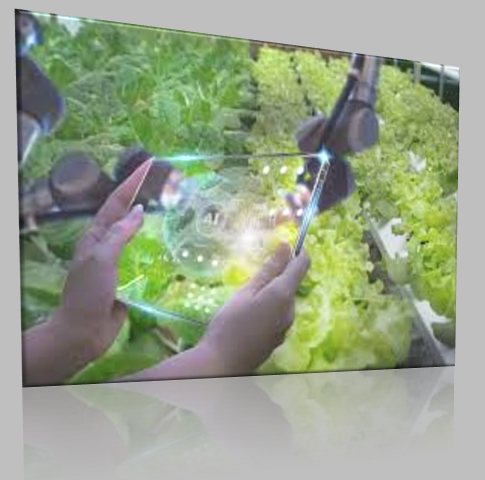Introduction
Ensuring food security and nutritional value is not only vital but also essential in today’s global food supply chain. From production to consumption, maintaining high standards safeguards public health, protects brand integrity, and meets strict regulatory requirements. Traditionally, food quality control has relied on manual inspections and laboratory testing, which are often time-consuming, resource-intensive, and vulnerable to human error.
The management of food quality is currently being revolutionized by artificial intelligence (AI). With its ability to process vast data quickly and accurately, AI brings speed, precision, scalability, and automation to food safety systems. This technological change heralds a new era of intelligent, real-time quality control.
What is AI in Food Quality Control?
AI in food quality control leverages technologies like machine learning, computer vision, and advanced analytics to assess a wide range of food parameters, including safety, freshness, uniformity, and regulatory compliance. These tools allow manufacturers to:
- Detect subtle defects
- Predict shelf life
- Optimize sorting and grading
- Monitor hygiene and environmental conditions
AI systems can operate faster and more consistently than human inspectors, making them ideal for high-throughput environments.
AI’s Key se within food quality control
1. Visual Inspection with Computer Vision
AI-powered computer vision systems evaluate food goods in real time and identify:
- Surface flaws (e.g., fruit bruising, meat discoloration)
- Foreign contaminants (e.g., metal shards, plastic fragments)
- Shape, size, and color inconsistencies
These systems are especially effective in automated processing lines, where thousands of items pass through each minute.
2. Predictive Shelf Life Modeling
By analyzing historical data on factors like storage temperature, humidity, and microbiological growth, AI can predict the actual shelf life of perishable products. This leads to more precise dates for expiration and helps reduce food waste.
3. AI for Sensory Analysis
AI is now mimicking human senses to evaluate product quality. Using machine learning models trained on sensory data, AI can assess:
- Aroma profiles (e.g., coffee or tea)
- Ripeness levels in produce
- The consistency and quantity of fat in meat and milk
4. Detecting Microbial Risks and Contaminants
AI systems process inputs from biosensors, lab tests, and environmental monitoring tools to:
- Track microbial growth trends
- Pinpoint contamination sources
- Set up real-time warnings inside HACCP (Hazard Analysis & Critical Control Points) systems.
5. Smart Sorting and Grading
AI-equipped robots and cameras can sort and grade products by quality attributes like size, color, and ripeness. These systems significantly improve grading accuracy and reduce waste caused by human error.
AI vs. Traditional Quality Control
| Traditional Methods | AI-Based Methods |
|---|---|
| Manual inspections prone to fatigue | Consistent, round-the-clock operation |
| Relies on random sampling | Enables 100% product inspection |
| Slow, lab-based quality testing | Real-time analysis and decision-making |
| Subjective sensory assessments | Objective, data-driven evaluations |
| Reactive problem-solving | Predictive and preventive capabilities |
Real-World Industry Applications
- Nestlé utilizes AI-powered imaging systems to detect imperfections in confectionery and dairy products at high speeds.
- PepsiCo ensures consistency in quality by using AI to assess the crispness and flavor of its snack brands..
- IBM Food Trust, in collaboration with major global retailers, combines AI and blockchain to enhance traceability and verify food quality across the supply chain.
Challenges and Considerations
Despite its enormous potential, implementing AI in food quality management is not without obstacles.
- Data Dependence: High-quality, labeled datasets are essential for accurate model training.
- High Initial Costs: Installing AI-driven infrastructure can be cost-prohibitive for smaller businesses.
- Regulatory and Ethical Issues: Transparency, fairness, and compliance with food safety standards must be ensured.
- Workforce Readiness: There is a need to upskill the workforce in AI literacy and technical operation.
The Road Ahead: Future Trends
As AI evolves, its integration with IoT, robotics, and blockchain will create a more intelligent and connected quality control ecosystem. Emerging developments may include:
- AI-driven taste and smell sensors (e-tongues and e-noses).
- Edge AI for on-site, low-latency processing
- Autonomous AI inspectors that can verify compliance and report violations in real time
With growing recognition from regulators and increasing adoption by industry leaders, AI in food quality control is set to become a standard practice rather than a cutting-edge innovation.
Conclusion
Artificial Intelligence is rapidly redefining the standards of food quality control. By bringing automation, consistency, and predictive capabilities to the table, AI not only improves food safety but also enhances efficiency and reduces waste. To harness its full potential, the industry must focus on ethical deployment, workforce training, and robust data systems. As we move forward, AI stands as a pivotal tool in delivering safer, higher-quality, and more sustainable food to a growing global population.
